
Azenta Inc
NASDAQ:AZTA
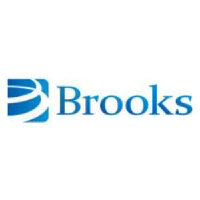

| US |

|
Fubotv Inc
NYSE:FUBO
|
Media
|
| US |

|
Bank of America Corp
NYSE:BAC
|
Banking
|
| US |

|
Palantir Technologies Inc
NYSE:PLTR
|
Technology
|
| US |
C
|
C3.ai Inc
NYSE:AI
|
Technology
|
| US |

|
Uber Technologies Inc
NYSE:UBER
|
Road & Rail
|
| CN |

|
NIO Inc
NYSE:NIO
|
Automobiles
|
| US |

|
Fluor Corp
NYSE:FLR
|
Construction
|
| US |

|
Jacobs Engineering Group Inc
NYSE:J
|
Professional Services
|
| US |

|
TopBuild Corp
NYSE:BLD
|
Consumer products
|
| US |

|
Abbott Laboratories
NYSE:ABT
|
Health Care
|
| US |

|
Chevron Corp
NYSE:CVX
|
Energy
|
| US |
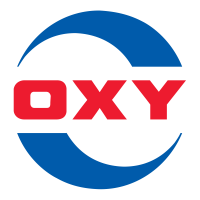
|
Occidental Petroleum Corp
NYSE:OXY
|
Energy
|
| US |
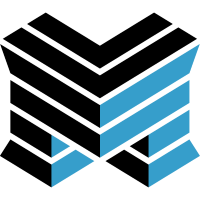
|
Matrix Service Co
NASDAQ:MTRX
|
Construction
|
| US |
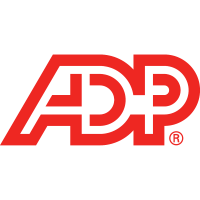
|
Automatic Data Processing Inc
NASDAQ:ADP
|
Technology
|
| US |
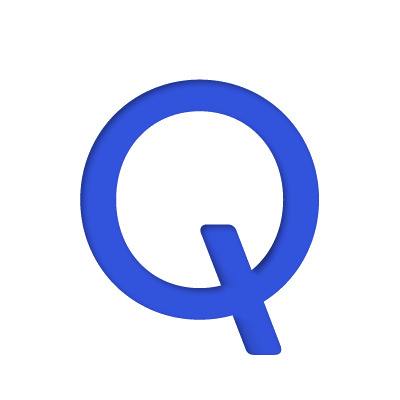
|
Qualcomm Inc
NASDAQ:QCOM
|
Semiconductors
|
| US |

|
Ambarella Inc
NASDAQ:AMBA
|
Semiconductors
|
Utilize notes to systematically review your investment decisions. By reflecting on past outcomes, you can discern effective strategies and identify those that underperformed. This continuous feedback loop enables you to adapt and refine your approach, optimizing for future success.
Each note serves as a learning point, offering insights into your decision-making processes. Over time, you'll accumulate a personalized database of knowledge, enhancing your ability to make informed decisions quickly and effectively.
With a comprehensive record of your investment history at your fingertips, you can compare current opportunities against past experiences. This not only bolsters your confidence but also ensures that each decision is grounded in a well-documented rationale.
Do you really want to delete this note?
This action cannot be undone.

| 52 Week Range |
40.37
67.51
|
| Price Target |
|
We'll email you a reminder when the closing price reaches USD.
Choose the stock you wish to monitor with a price alert.

|
Fubotv Inc
NYSE:FUBO
|
US |

|
Bank of America Corp
NYSE:BAC
|
US |

|
Palantir Technologies Inc
NYSE:PLTR
|
US |
|
C
|
C3.ai Inc
NYSE:AI
|
US |

|
Uber Technologies Inc
NYSE:UBER
|
US |

|
NIO Inc
NYSE:NIO
|
CN |

|
Fluor Corp
NYSE:FLR
|
US |

|
Jacobs Engineering Group Inc
NYSE:J
|
US |

|
TopBuild Corp
NYSE:BLD
|
US |

|
Abbott Laboratories
NYSE:ABT
|
US |

|
Chevron Corp
NYSE:CVX
|
US |

|
Occidental Petroleum Corp
NYSE:OXY
|
US |

|
Matrix Service Co
NASDAQ:MTRX
|
US |

|
Automatic Data Processing Inc
NASDAQ:ADP
|
US |

|
Qualcomm Inc
NASDAQ:QCOM
|
US |

|
Ambarella Inc
NASDAQ:AMBA
|
US |
This alert will be permanently deleted.
 Azenta Inc
Azenta Inc



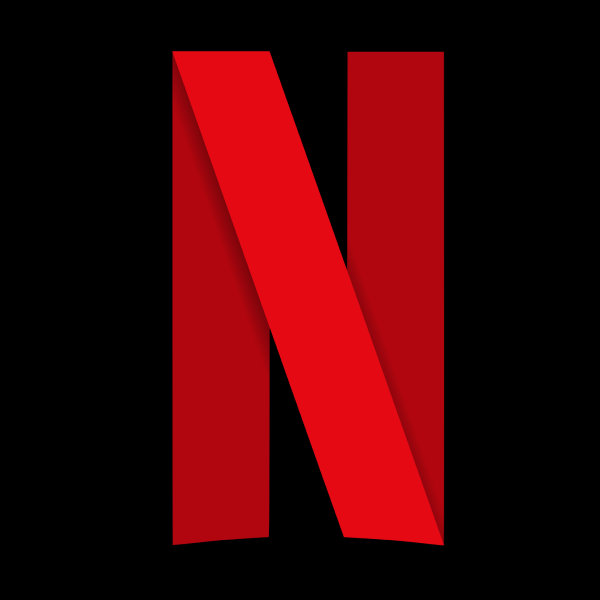

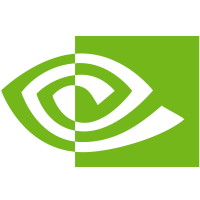
 You don't have any saved screeners yet
You don't have any saved screeners yet

Ladies and gentlemen, thank you for standing by. Welcome to the Brooks Automation Q4 2018 Financial Results Conference Call. [Operator Instructions] As a reminder, this conference is being recorded, Monday, November 19, 2018.
I would now like to turn the conference over to Lindon Robertson, Executive Vice President, Chief Financial Officer. Please go ahead.
Thank you, operator, and good afternoon, everyone.
We would like to welcome each of you to the fourth quarter financial results conference call for the Brooks fiscal year 2018 ended on September 30 of this year. A press release was issued after the close of the markets today and is available at our Investor Relations page of our website, www.brooks.com, as are the illustrated PowerPoint slides that will be used during the prepared comments during the call.
I would like to remind everyone that during the course of the call, we will be making a number of forward-looking statements within the meaning of the Private Litigation Securities Act of 1995. There are many factors that may cause actual financial results or other events to differ from those identified in such forward-looking statements. I would refer you to the section of our earnings release titled Safe Harbor Statement of the safe harbor slide on the aforementioned PowerPoint presentation on our website and our various filings with the SEC, including our annual reports on Form 10-K and our quarterly reports on Form 10-Q. We make no obligation to update these statements should future financial data or events occur that differ from the forward-looking statements presented today.
We may refer to a number of non-GAAP financial measures, which are used in addition to, and in conjunction with, results presented in accordance with GAAP. We believe the non-GAAP measures provide an additional way of viewing aspects of our operations and performance, but when considered with GAAP financial results and the reconciliation of GAAP measures, they provide an even more complete understanding of the Brooks business. Non-GAAP measures should not be relied upon to the exclusion of the GAAP measures themselves.
On the call with me today is our Chief Executive Officer, Steve Schwartz. We will open with his remarks on the business environment and our fourth quarter highlights, and we will provide an overview of the fourth quarter financial results as well as the fiscal year financial results and a summary of our financial outlook for the quarter ending December 31, which is our first quarter of our fiscal year 2019. We will then take your questions at the end of those comments.
With that, I would like to turn the call over now to our CEO, Steve Schwartz.
Thank you, Lindon.
Good afternoon, everyone, and thank you for joining our call. We're pleased to report to you on the results from a strong Q4 and on another fiscal year of excellent performance.
Fiscal 2018 was a very important period for the company as we believe that it demonstrates a high level of operating and strategic agility. In the year, we grew revenue 19% and EPS by 27%, and this was following our fiscal 2017 year when we grew revenue 24% and earnings by more than 150%. Additionally, in Q4, we announced 2 significant business transactions that will not only be transformative but which meaningfully reposition the company on a trajectory that we've been aiming toward for a number of years. It's been no small feat to keep the business running with increased profitability, strong revenue growth above the rate of the underlying market opportunity and simultaneously implementing company-changing transactions. It's a testament to a very capable and engaged Brooks team. And though our results have been exceptional, what energizes us even more is that we have yet -- not yet begun to recognize the value of these transactions in our performance. We truly believe that we're in the earliest days of what's an opportunity of tremendous value creation from the capability that we've constructed.
As we enter fiscal 2019, we're in the midst of an uncertain semiconductor equipment environment, but it's important to note that these are still historically very high levels of spending. We are making the most of it as we've retooled our product and technology offerings to take advantage of high-growth sectors that continue to outperform the overall space. And you'll see in our results that the semiconductor portion of our business has performed much better than if we'd been only a subsystem component supplier to front-end equipment companies.
On the Life Sciences front, the demand drivers for the capabilities that we've crafted remain solid and the opportunities are growing at a pace that often sustains strong growth for many years to come. The addition of GENEWIZ' capability to our offering significantly enhances not only the value proposition to our customers but also brings meaningful potential customer synergy as I will discuss more in my remarks about GENEWIZ.
To put a finer point on how we view the current market environment, even in a flat to modestly down year in 2019 wafer fab equipment spending, we are confident that our semi business will grow year-over-year. And by year-end, we expect that Life Sciences will once again grow 20% organically and should exit 2019 at close to a $400 million run rate, bringing Life Sciences to more than 40% of overall revenue. In his remarks, Lindon will put this perspective into an outlook for overall business, and he'll give you our thoughts on implications for 2019 and beyond.
We have a lot of information to share with you today and we'll do our best to provide clarity as we describe the impact of the many changes that are occurring in the company. Lindon will speak in a moment about our financial results, and he'll orient you toward our future state and outlook in terms of continuing operations, which excludes Semiconductor Cryogenics and includes GENEWIZ. In my remarks about Q4, I will mostly focus on non-GAAP performance as if we had not announced the sale of our Cryogenics business, as we feel it's important and useful to describe our performance against the expectations that we set 1 quarter ago. With that as an introduction, I will begin.
We had a strong finish to 2018 with Q4 revenue of $208 million and $0.40 of non-GAAP EPS. On a sequential basis from the June quarter, Life Sciences was up 2% and Semiconductor decreased by 10%, both consistent with our guidance and expectations. I'll give a brief summary for each of the 2 business segments before I comment on the implications of our recent strategic moves, and I'll start with Life Sciences.
Q4 revenue was $51 million, up 16% year-over-year in total and 6% organically. In Q4, the sample storage business grew 19% year-over-year, consistent with the range we've observed since we entered this business 3 years ago. Automated store systems were down 7% in the quarter but still up 14% for the full year compared to 2017. There remains some variability in this portion of the business but this is a good growth market for the long term.
In one important development, we had a breakthrough in our new cryosample management area as we received 2 orders totaling 16 B3C cryostorage systems from one of the leaders in cell therapy with an approved drug. Most of these systems are planned to be shipped in the second half of our 2019 with the units being used across the workflow to help the customer to manage QC, work in process, to stage final products and for the long-term storage of retained doses. This is a major milestone for the cryo product offerings and a very meaningful endorsement of our technology solution in this complex temperature-critical cold chain. It's exactly for this type of application that we extended our cold chain offerings into cryogenic temperatures. We look upon this meaningful first win as one seed planted with much more opportunity ahead.
A few of the full year highlights include: revenue of $197 million, up 32% from fiscal 2017. Organic growth was 14%. Operating profit expanded to $9 million, and we grew backlog to $273 million, up approximately $15 million from 1 year ago. We completed 2 acquisitions, 4titude and BioSpeciMan. And for the year, we added 200 new customers, a 20% increase year-over-year, and orders from these new and our existing customers is what gives us confidence in our ability to reaccelerate growth heading into 2019.
All in, 2018 was a strong building year for the Life Sciences business. We met our 30% growth commitment, and we integrated 2 new acquisitions and introduced several innovative new products to the market.
One of the most notable achievements in 2018 was our agreement to acquire GENEWIZ, a hugely capable growth company that particularly fills an opening in our cold-chain offering. As we announced on November 15, we have closed on the acquisition of GENEWIZ, and already, we're at full speed ahead with our integration and assimilation of the company. GENEWIZ has an annual revenue run rate of more than $120 million and has been growing more than 20% per year. They are more than 1,100 people strong, and more than 250 employees are advanced-degree genomics experts.
GENEWIZ currently serves more than 4,000 customers worldwide, and they bring tremendous capability to Brooks. Their principal lines of business involve the reading and writing of genes, an extremely valuable set of offerings to customers for whom we already manage samples. We're fortunate to add GENEWIZ' capabilities to our sample management offerings as their customer focus and high-quality offerings are a perfect cultural and performance fit with what we've created at Brooks.
In terms of what it means to have GENEWIZ as part of the company, we see more growth opportunities from the additional services we can provide to our respective customers: sample management to GENEWIZ customers and more genomic services to our current customers. Additionally, there exists more leverage opportunities for our complementary global footprints, especially GENEWIZ' very strong presence in China and Brooks' capabilities in Europe.
Looking ahead, expectations for our total Life Sciences business include: higher growth in the core Life Science business as we accelerate off the low point at September and start to move back towards our long-term 18% to 20% growth capability; and for the 2019 fiscal year, we anticipate that both sample management and GENEWIZ will deliver 20% growth and will exit the September quarter close to a $400 million run rate.
In terms of business build-out, we still have an appetite for more samples, both by the addition of new customers and from the addition of more samples from existing customers. We also continue to look for and evaluate complementary acquisitions of sample storage providers that meet our quality and value criteria. But our immediate priority is to assimilate GENEWIZ to ensure continued growth and to capitalize on revenue synergies between sample management and GENEWIZ offerings.
As we move into 2019, we're focused on delivering more of the profit potential, which should come from a business of this size. We are a couple of quarters behind on results from some of our operational improvement initiatives, but we're focused and committed to delivering these improvements without sacrificing the growth opportunity that's inherent in this business. I emphasize that we're in the earliest days of the definition and capture of this market opportunity, and we're building a business for the long haul.
I'll now turn to our semiconductor business. Our semiconductor engine continues to drive us forward. Design win activity was once again robust, and from an operations standpoint, we delivered more gross margin improvement even as revenue lightened by 10% from the June quarter, coming in at $157 million. Despite the drop in the September quarter, semi revenue was still up 14% over the same quarter 1 year ago, and overall semi revenue for the full year was $631 million, up 16% from fiscal 2017.
Our key segments continued to provide our growth, and importantly, we will retain all of our same-growth drivers after the sale of the cryo-vacuum business. I'll address each of them now.
Not surprisingly, our vacuum automation business was down sequentially in the September quarter as Tier 1 OEM shipments were sharply curtailed as demand has slowed. In the aggregate, vacuum automation was down sequentially 25% in the September quarter, consistent with the pattern in the industry for lower front-end process tool shipments and some inventory burn-off. However, inclusive of the slowdown in the September quarter, our year-over-year performance in vacuum automation remained very strong with revenue up a full 18% in fiscal 2018 compared to a year earlier. This is the result of a combination of the expansion and deposition in etch markets plus the result of our persistent market share increases as we continue to win vacuum systems business from Tier 2 OEMs and we replace more legacy internal vacuum robot designs from Tier 1 OEMs.
We ended the year strong in advanced packaging with revenue for the quarter coming in at $14 million, bringing our full year total to $56 million, up 23% over fiscal 2017 and double the $28 million we delivered in 2015. Our customer base continues to expand as is the number of design wins we're capturing, assuring us a strong position as the market develops. And although we cannot accurately predict the market for this opportunity, we know that the technology trend, coupled with our high design win and market share, positions us well for the future.
In Contamination Control Solutions, revenue was $23 million, up 8% sequentially, with CCS reticle storage business contributing $7 million in the quarter, up from $4 million in the June quarter. CCS revenue, excluding reticle stocking, was approximately $16 million, down 8% from June. We believe that the combination of CCS with the reticle stocking business represents a valuable long-term growth vector for the company.
Our outlook for CCS is for growth again in the December quarter, and order activity is giving us confidence that the March quarter may be as strong a quarter as we've seen in 2 years as the 7-nanometer early build-out activity looks to be starting in the first part of calendar 2019.
In terms of our outlook for the overall semiconductor business, in December, we have a chance to demonstrate the value of our diversified growth portfolio. We forecast our semiconductor business to be flat, plus or minus a few percent, led by CCS strength, systems growth for advanced packaging and Tier 2 OEMs, and new design wins, coupled with relatively flat and stable outlook for vacuum robots as we believe any inventory effects were mostly cleared in the September quarter.
At this juncture, we're forecasting March to be an up quarter, making September and December the low points for us in the cycle. If this is the case, then our semiconductor low point this cycle will be approximately 12%, below our June peak, yielding performance that is more resilient compared to the business of U.S.-based Tier 1 OEMs and the subsystem suppliers for these OEMs. This, we believe, is a meaningful and significant testament to the semiconductor product portfolio that we've transformed into, and this holds true including or excluding the Semiconductor Cryogenics business.
We are pleased with the performance of both our semiconductor and Life Sciences businesses, and we're eager to deliver on the next phase of our growth agenda. For those of you who have been following our transition, you are aware that we're in the middle of a strategic transformation of the company. And with the 2 significant transactions that are underway, we are eager to begin to deliver on the next level of performance afforded by a company with profitable growth prospects in not 1 but 2 very attractive technology markets.
Our strategy to focus on technology-advanced, high-growth, high-value automation opportunities has been central to the improved performance of our semi business, and we're pleased with the position that we've solidified over these past few years with both Tier 1 and Tier 2 equipment makers as well as end-user chip makers, thereby creating a broader customer and application base and building stronger positions in Asia where we have customers who uniquely serve customers in the region.
In Life Sciences, we've created a unique value platform in the management of samples for pharmaceutical and life sciences companies, research and academic institutions and myriad startup venturers who now have a means to manage faster trials without the burden of having to create their own sample management infrastructure. With the addition of GENEWIZ to our offering, we have a tremendous value-added capability for genomic analysis across a wide spectrum of offerings plus additional services like gene synthesis for which existing customers will be able to utilize one supplier for many of their biosample processing needs.
That said, in the near term, that is our Q1 and Q2, there will be some significant perturbations to the numbers that we report in terms of both revenue and earnings per share from what we've delivered lately as we've moved the Semiconductor Cryogenics business to discontinued operations, and in Q1, we'll report only a partial quarter of GENEWIZ revenue. Additionally, we maintain many transition-related costs associated with the transfer of one business and the assimilation of another that will continue to float through our P&L for a few more quarters. As we conclude these transactions and reestablish a more normal business pattern, you will witness a higher-growth, more profitable company emerge as a result.
As we effect this transition, we will report all of these movements with clarity and precision, and we will ask you to keep sight of the upshot of our transformation that will begin to prove out in the following key deliverables: One, even with the sale of the cryo-vacuum business, which contributed approximately $200 million of 2018 revenue, we intend to at least match 2018 revenue in 2019; Two, the growth of our new continuing business should be inherently higher and less volatile than our already high-growth business; Three, profitability, as measured by earnings per share, is expected to recover to last year's peak quarters by the middle of 2020; And fourth, one year from now, more than 40% of our revenue will come from Life Sciences even as we grow our semiconductor business. This is a significant transition indeed and we believe an opportunity to deliver tremendous customer and shareholder value.
And that concludes my formal remarks. I'll now turn the call back over to Lindon.
Thank you, Steve.
Please refer now to the PowerPoint slides available on the Brooks website under our Investor Relations tab.
To start the remarks, I would like to draw your attention to Slide 3, providing a quick snapshot of results. In the GAAP results at the top, you will see a very different revenue number than what you are accustomed as we have moved to a split of the continued and discontinued operations view. The revenue of $160 million excludes revenue from the Semiconductor Cryogenics business, which is pending the closure of the sale that is expected to occur in our second fiscal quarter of 2019.
Looking at the non-GAAP data below, you can see that when we include the cryogenics business, our revenue came in at the $208 million or 7% lower than Q3. It is also interesting that in the comparison of the year-to-year growth rates, when you remove the cryogenics revenue, the total growth has lifted from 14% to 19%. This will, of course, vary in any short-term period of time, but this is indeed the indication of the longer term. Our portfolio will see faster growth as we move to the future. Non-GAAP earnings per share on the same definition of the business in which we have discussed and guided in the past came in at $0.40.
On Slide 4, we will dive deeper into the non-GAAP P&L as if the business remained entirely integrated, just as we guided at the end of last quarter.
First, I connect you with the revenue I just showed on the prior page. In the first column, you see fourth quarter results with the cryogenic revenue included in the $208 million. This result, as I said, was 7% lower than the third quarter and 14% higher than 1 year earlier. The non-GAAP operating margins expanded 80 basis points on the revenue growth and leverage showing up in gross margin and operating expenses. Below operating income, we saw $2 million of interest expense from our term loan, which was new year-over-year, we had $1.9 million of income from the cryogenic joint venture, and also a lower tax rate this quarter. In total, earnings per share was 15% higher on 14% revenue growth compared to the fourth quarter of 2017.
On the right side of the page, you see the full year results of 2018 where we had $1.57 in earnings per share for the year, which is 27% higher than the prior year. It was a year of high performance for Brooks. The revenue growth of 19% includes cryogenic revenue in both years. Life Sciences delivered 32% growth, and the total of semiconductor grew 16%. Gross margin expanded 180 basis points, driven by improvement in semiconductor solution margins. Operating expenses shows growth with revenue, a portion of which was driven by new acquisitions.
We did see improving tax rates for the year at 11% versus 15% in 2017. However, offsetting this, interest expense of $8 million was incremental for the year, reflecting approximately 4% interest rates on a $200 million term loan.
The joint venture income decreased this year to $6.8 million, and I'll highlight that this joint venture income is from our share of the UCI venture in Japan. This aligns with the cryogenics business, which is being sold, so when we transition to the continuing operations view, you will not see this line item.
Overall, we report 27% earnings per share growth on the 19% revenue growth, all in the definition of how you have known us in the past, with the cryo business included.
Let's turn to Slide 5, and I will translate to our new continuing operations view so that we can focus on the future for the remainder of our discussion.
This is the same time period of Q4 in 2018 full year under the continuing operations accounting treatment. You will immediately notice the revenue of $160 million for the fourth quarter and $632 million for the full year does not include the cryo business. You can see the higher growth rates in each column for continuing operations after removing the cryogenics business.
In the area of margins, we have reallocated the infrastructure which is shared across the business lines. The total of cost and expense, which was allocated to the cryogenics business, was in the range of $20 million annually. This puts approximately 1 point of pressure on gross margin and an additional 4 points in expense or an approximate total of 5 points on operating margins. Below operating margins, the income from the joint venture goes with the sale, as I said earlier.
In summary, there are some temporary headwinds to the separation of the cryogenics business as we will see pressure on margins in the near term. We are, of course, revisiting the infrastructure for efficiency opportunities in 2019, looking to reduce some of the stranded costs. But let's keep this in the context of transformation. We're receiving $675 million cash price for the business we sold, the portfolio is tuned for higher growth rates and it will gain back the leverage as we have kept a higher profit drop-through which will accumulate quickly. More about this in a few moments, but for now, let's turn to the segment performance.
I'll address semiconductor first on Slide 6. The semiconductor business has provided strong growth for 2 years straight now. As Steve has commented, 15% growth this year came despite a softer year in Contamination Control Solutions. The growth has been driven by strength in the advanced functionality of our new MagnaTran LEAP robots and the expansion of systems sales into the second-tier OEMs.
You may recall from our Analyst Day in June that Dave Jarzynka outlined the value of new design wins from 2017 and 2018. We're seeing that value play out now, and the gross margin movement is also aligned with this value.
It is important to note, once again, the reallocation of our corporate-ensured cost-in to the segment. As the cryogenics business is sold, we have allocated our G&A and our other costs, resetting the baseline of operating margins. The semiconductor business is impacted by 5 points of operating margin in 2018.
Moving on to Slide 7, we see Life Sciences. I want to first highlight that this segment was also impacted by the reallocation of the stranded costs to the tune of about 3 points on operating margins.
Revenue has continued to make progress in Life Sciences. This page provides a really clear picture of our revenue story for the year. At our year-end call this -- at this time last year, we indicated that revenue would grow more than 30% in 2018 based on what we were owning at that time. Our growth rate came in at 32% year-over-year. The Canada-based storage services business, which we acquired in the third quarter, had a very small impact and does not move the growth rate. We made the growth target as we expected. And the Life Sciences business has had 13th consecutive quarters of sequential growth. It is a steady track.
With that said, we acknowledge the organic growth rate has slowed again this quarter. As Steve explained, the pipeline of contracted customers and expected contracts gives us confidence in a 20% growth again this year. This gets us to about $235 million in 2019.
I should note for you that we anticipate an approximate $5 million impact from the -- on an annual basis from the new revenue recognition standards which becomes effective for us immediately in the first quarter. The $235 million target allows for this change.
Regarding gross margins, the Life Sciences business saw sequential progress in most portions of the business in the fourth quarter but still missed the store systems target due to higher cost to produce the stores. Going forward, the business sees a partial step-up progress in our first quarter but not all the way to 40%.
In total, we expect this portion of our life science business to be in the range of $51 million to $53 million in revenue and to bring gross margins above the 39% level.
Let's move on to the balance sheet on Slide 8. You can note that the assets-held-for-sale treatment was handled and -- for the discontinued operations of the cryogenics business, there's a line for this in the short-term and the long-term asset section. Also notable was the increase of the goodwill and intangibles, all driven by the acquisitions in the year, that being 4titude and BioSpeciMan in our Life Sciences segment, and Tec-Sem in our semiconductor segment. Net of the acquisitions and divestitures, we had flat performance year-over-year on receivables, days sales outstanding and inventory turnover.
As a reminder, the strength of our balance sheet allowed us to move forward with the acquisition of GENEWIZ for $450 million, which will add to the balance sheet in this first fiscal quarter of 2019, along with $350 million of incremental debt.
If you look further into the second quarter, we expect to pay down much of the debt as we expect to close the sale of the Semiconductor Cryogenics business. That price again was $675 million.
If you net the 2 deals, we expect to yield approximately $90 million of net cash.
We intend to pay down all of the $350 million incremental debt and a portion of the $194 million that you still see on the balance sheet today.
Turning to Slide 9, we report on our cash flow. In 2018, we produced $74 million of operating cash, of which $31 million came in the fourth quarter. It is notable that $47 million was added to working capital. As I indicated on the balance sheet, our performance metrics and working capital was consistent with our growth so we are well positioned for 2019 in this area.
CapEx was a normal year for us in 2018 at $13 million. I will highlight now that we expect an increase in this line in 2019 to a range of approximately $30 million to $40 million. We estimate $20 million to $25 million is aligned with our traditional businesses, including the advancement of product in semiconductor and growth for Life Sciences sample management. The other $10 million to $15 million will support GENEWIZ growth.
We paid out $28 million in dividends to shareholders in the year and finished the year with $251 million of cash on the balance sheet and a net cash position of more than $50 million.
Now turning to Slide 10, let's take a look toward the future. Last week, we had just completed our largest acquisition yet in the Life Sciences space. The addition of GENEWIZ extends our ability to serve our customers in managing samples. Genomic services, including sequencing and synthesis, is a critical input for research and development in most dimensions of advancing health care today. More than 4,000 customers of pharma, biotech and academics around the world are using GENEWIZ as their sequencing and synthesis service provider. The deliverable in this business is high-quality data, assistance in the research steps to solve challenging analysis and fast delivery to accelerate the steps of research.
GENEWIZ has driven growth of 25% over the recent years, reaching $120 million over the 12-month period of our 2018 fiscal period. You can see, they have secured premier customer relationships in which many are shared in our Life Sciences sample management business but many will be new relationships on both sides. It is a significant step in building our comprehensive offerings to sample-based services.
Based on the November 15 closure of the acquisition, we expect GENEWIZ to contribute approximately $120 million of revenue in the remaining 10.5 months in our fiscal year 2019, and we expect it to carry non-GAAP gross margins of approximately 50%.
Let's go to Slide 11 to look at the impact from the acquisition of GENEWIZ and the pending sale of the Semiconductor Cryogenics business to our Brooks growth tracks.
As already explained, the cryogenics business has moved to discontinued operations. This business had $196 million of revenues, so we reset the revenue for continued operations at the $632 million level. As we look specifically to 2019 revenue expectations, I can build you back to the $828 million level and a little higher as we expect to completely replace it within the year.
The GENEWIZ business is expected to add $120 million to our business as I just mentioned. We remain on the 20% revenue growth in the Life Sciences sample management business, providing approximately $40 million of incremental revenue for the year. In the semiconductor segment, we will show you guidance in a moment, indicating approximate flat quarter-to-quarter revenue trend on the continuing operations. However, this is approximately $13 million higher than the first quarter of 2018. And as Steve has already indicated, we see some signs of expansion in the second quarter and some confidence for the year.
Overall, we believe the total of these to bring our 2019 fiscal year back above the $828 million seen in 2018 but replacing the cryogenics business with higher growth components. We expect the earnings per share with this to exceed $1 per share.
Remember, this is a transformational period where Life Sciences will become approximately somewhere more than 40% of the revenue and will be increasing in profit margin. We will also reduce some of the stranded costs and be stronger as we leave the year. And from there, we anticipate revenue growth range to approximately 15%, getting us to exceed -- to excess of $1 billion by 2021. This represents 17% to 20% growth rate in Life Sciences and an 8% to 10% in our semiconductor automation business.
The transformation ramp and objectives are set, with the ramp of revenue replacing and catching the historical level of revenue within this year, then catching the operating profit and margins in 2020. And we believe the business is positioned to be a growth business for a long time to come.
So let's turn to Slide 12 and look at the guidance on this quarter of transformation. We see the revenue being in the $170 million to $180 million range. This reflects an estimate of semiconductor to be flat quarter-to-quarter, Life Science sample management to expand another 2%, and the addition of $13 million to $16 million of the GENEWIZ business in revenue.
The earnings per share of $0.17 reflects consistent profit contribution of the semi segment and about 1 point of improved gross margin in Life Sciences. We combine this with approximately $3 million additional interest expense and a higher tax rate now expected to be in the range of 23%. GENEWIZ is expected to be accretive in the quarter, nearly offsetting the incremental interest expense.
So this concludes our prepared remarks. I'll now turn the call back over to the operator to take some questions from the line.
[Operator Instructions] One moment please for the first question which comes from the line of Patrick Ho with Stifel.
Steve, maybe first off on the semiconductor side. Your outlook is very promising, particularly given some of the commentary from your component peers. Can you discuss, I guess, on the vacuum automation side of things what's the difference in terms of the inventory work-down time period? What are the buying habits or the purchasing habits of your customers that lead you to bounce back sooner from this inventory work-down that others are seeing?
Yes, Patrick. So we're -- we know we burned some inventory in the September quarter, but we're continuing to ship components to the Tier 1 OEMs. So we think we're in pretty good balance there, and we've been able to meet the requirements they have. I don't know that there was as much an inventory build because if we sell a robot for each particular configuration, it's specific to a tool type. So it's not like they can use a single robot for 7 or 8 different platforms. So we think we've been pretty tight and pretty close there. Indeed, there was some excess inventory, but we think that part has largely been burned off. In terms of the additional automation components that we ship, in addition to Tier 1 OEM robots, we ship systems, vacuum systems to Tier 2 suppliers. And those markets are not necessarily all front end. So some of those are advanced packaging applications, and so when we look at the next quarter health of the business, we believe that we're starting to see in December, maybe even the March quarter, some expansion of the vacuum automation systems that go to non-North America equipment makers, Tier 2, who supply to back-end providers in Asia, if you will.
Great, that's helpful. And my follow-up on the Life Sciences end, I know obviously, you just closed the GENEWIZ acquisition. That's going to be additive on a going-forward basis. But driving to that 20% target growth rate that you have for fiscal year '19, how do you look at it based on the visibility and I guess, some of the roadmap that you have today? Is it going to be driven more by a lot of your services business? Or is it -- are you going to see more systems sales in fiscal year '19 to get to that target growth rate?
Yes. So Patrick, we got a couple of elements here. For sure, we anticipate that the services business will continue to march steadily along. We're in the high teens and 20% range for the sample management business. And from a GENEWIZ standpoint, indeed, it's additive. And they've been growing at a rapid rate, and they don't see a slowdown. So their next-gen sequencing, the gene synthesis, the Sanger business has been pretty dependable. And so we think those components will remain strong. From a storage standpoint, I'll give you a little bit of perspective here because we know this a little bit heavier lift. The backlog remains strong. We've got some operational issues to continue to work through. Dusty and his team are really focused on this, but as I mentioned, we're a couple of quarters behind. But we do have 20 projects underway. And even though the year-on-year quarter in September was 7% down from a year ago, the business in the aggregate was up 14%. And that's the kind of growth opportunity that exists in the storage business, and we think we'll be able to sustain that. One of the reasons that we brought attention also to the backlog is the customer base, we increased the customer base by almost 20%, so 200 more customers on a base of about 1,000 that we had a year ago. And we have increased backlog. And in a couple of instances, we're just waiting for -- I think we are more aggressive in our assumptions about when some of the collections and trials would start. And we know those have been pushed so far, one by a quarter and another by 2 quarters. So that business is in backlog, and we'll start to see that out in the Q2, Q3 time frame in terms of even a boost to the services business. So we know we have some proofs to bring to the table here, but we're pretty confident about the backlog that exists and the opportunities there. But 20% still feels like the right growth rate, and again, we can see it in the customer base and in the backlog.
[Operator Instructions] The next question comes from the line of Paul Knight with Janney.
Lindon, what's the operating margin of GENEWIZ, non-GAAP?
Yes, Paul, we haven't gone to the operating margin level on public, so will get to know the company more before we put that out. But as I said, it will be accretive to nearly offset the interest expense I said would be incremental in the quarter of $2 million, $3 million. So it gives you a pretty good indication against the $15 million of revenue range.
How much of GENEWIZ revenue in the September quarter?
I'm sorry?
Paul, in the September quarter?
Yes, I'm sorry. Yes, I'm sorry. You're guiding, too, for the current quarter, sorry, ending December.
In the December quarter, thank you. So in the December quarter, we have them for 0.5 quarter. So we picked them up on November 15, and we're guiding $13 million to $16 million for them.
Okay. And then on the -- on your EPS range, you're guiding to, I think I'm looking here at Slide 11. You're guiding to what, operating profit margins of 15.5% or greater, when, in FY '20?
Yes, that would be as we get to 2020. And so our point there, Paul, it's a good one, is that we recognize, as we set aside the cryogenics business, it sets us back, as I mentioned, about 5 to 6 points. Five points at the operating margin level, and you see about 6 points in the net income level. And so what I outlined at an operating level is first, we see a very clear path to replace the revenue within this year between the acquisition of GENEWIZ, the growth of the Life Science business and the traction that we're seeing in semi. And then the second step for us is replacing the profit by 2020, and that we have a pretty sharp trajectory on the growth of both the top line and the bottom line as we leverage that. So that's why we outlined the 2020 target, and so I think that's a good objective for us for the second year out.
I mean, an operating margin of 15.5% suggests a lot more than $1. But I guess, that's where you're letting us figure that one out, huh?
Let me highlight. Now the $1 is in 2019, okay, so we will -- we won't get there in 2019 on the 15.5%, we'll get there in 2020.
Okay. The 2019 number is what? What are you suggesting on earnings per share for 2019 then? More than $1 or less than $1?
2019, more than $1.
Okay.
And you can see in the specific quarter guidance, we're only starting out with $0.17, and this is on a continuing operations basis. So we'll pick up, and we're in -- we're admittedly on a transition-related spending and carrying some stock and consulting to help us along on that path. We're making some investments in IT for the Life Sciences business currently to help with this. So as we take these steps, you're going to see the momentum of the profit pick up as we move towards the second half of the year. But we think by the time we finish 2019, that being the September quarter, that we will have added up to something more than $1 earnings per share.
And then lastly, just a couple of quick ones. The tax rate we should assume on FY '19, and then GENEWIZ growth rate, 33% in FY '18. Should we assume 20% in the future? Or what are you kind of baking in there?
Yes, I've got, on the tax rate -- in fact, you can -- if you pick up that Slide 12 on the guidance, it might be a good summary for you. But on the tax rate, I put in 21% to 25% and point to a midpoint of 23% on the tax rate for the year. And on the growth rates in the Life Science, it's equivalent. What we've got in here is about 17% growth for this objective that we said. We're very specific that in this year, the 10.5 months will contribute $120 million of revenue from GENEWIZ. That's our expectation. That's just 10.5 months. They did -- it took 12 months for them to do that this last year, but that's a growth rate of about 17% on an annualized basis. And we had met -- as we said on the acquisition call, we're being a little conservative there. We know the team is driving for a higher growth there. We'll get to know the business. We're always a little conservative in the -- certainly, in the first 6 months when we first own a business. But yes, 17% to 20%, I think, is the right range to think about.
And total Life Science revenue in FY '19, you're -- what's the range there?
Yes. So the balance of the business is 20%, so it'd be the aggregate of that range -- round numbers, 18% to 19%, yes.
Okay. With Life Science revenue around what, $235 million or greater -- $335 million, rather?
Yes. Well, $235 million. On sample management, $120 million. So $355 million. Yes. I really appreciate the questions for the clarity.
The next question comes from the line of Craig Ellis with B. Riley.
This is actually Peter Peng calling in for Craig Ellis. On your semi business, can you kind of talk about your half-on-half? Some of your larger cap peers are talking about a flat to slightly up half-on-half. Just given that you have some significant foundry and logic exposure from your advanced packaging and contamination control, how should we kind of think about your profile against that backdrop?
Yes, Peter. So we're already going out a little bit ahead of what we normally do, giving you some idea about March, but our order backlog is building reasonably well to give us some confidence there. So again, we imagine about a flat December. We see growth in March. And we have to rely on the commentary, both from our customers and from people like you about what the back half looks like. So we're positive certainly based on the commentary about an expansion in the -- especially an opportunity in the second half. But we're kind of to give you some guidance as to what the first calendar quarter looks like, it begins to be up for us. But if, indeed, there's front-end wafer fab spending for capacity additions in the second half, that will be a benefit to us for sure. But we don't have much insight to that other than the commentary that's coming.
And in your Contamination Control, can you talk about your EUV exposure? So if -- the ASML is kind of from 18 to 30 EUV tools, how does that affect your business in the Contamination Control?
Yes. So for sure, we're having some reticle-related business for the reticle pod cleaners and the reticle stockers that are associated with EUV, so we're seeing some pickup. We haven't quantified it specifically. But after a lull of a couple of quarters, we're starting to see some more units go out. We'll try to provide a little bit more color to that. And indeed, we'll try to correlate it with the number of EUV tools that are shipped out. But we're starting to see that pick up a little bit. We don't have a huge amount of EUV business in our plan, but it's something that could generate in the $10 million to $20 million a year if the business does indeed pick up in '19.
Okay. And can you just comment on the interest expense line for -- throughout fiscal '19? Is $5 million the run rate or is it going to go down to something...
Yes, we expect it to go down. That's why we put the annual there of $12 million to $15 million. But in this quarter, it will be about $5 million, and that has only about $200 million of debt for the first half of the quarter but $550 million for the second half. So then depending on the closure timing of the cryogenics business, which we expect to be inside the March quarter, then we may get a partial or a whole quarter of expense there. And then we expect to carry some remaining debt for the second half but much smaller amount. So you'll see a bubble this quarter and second quarter, and then you'll see it come down significantly in the second half.
Okay. And one more question on M&A. Can you talk about whether there's path for further M&A in 2019? Is that a possibility? Or is this focused mostly on just debt reduction and so forth?
Yes. So I think it's -- Peter, I think it's more bandwidth than anything else right now. I think we've stretched the seams pretty hard. We've got 2 transactions going on simultaneously. There's a really rich pipeline of opportunity. And we think we have access to capital if, indeed, something came by that we -- that were deals that we wanted to do. So when Lindon talks about the amount by which we'll -- the amount of debt that we'll retire with our cash, we still want to keep the cash position to be able to quickly move on to opportunities. So pipeline is strong. The really first priority right now is for us to make sure that we give to Atlas Copco a fully functioning cryo business, that we bring GENEWIZ in and assimilate them and get the revenue synergies fired up, and then move on to the next acquisition opportunity after we've completed those. That's really the objective for us right now. But we think we'll have capital to continue to build out as we have opportunities that fit the roadmap.
We now have a question from the line of Drew Jones with Stephens, Inc.
Steve, would love to get a little more color on the Life Science cryo order, maybe just activity there, how much of the backlog that you talked about in Life Sciences is from the cryo side? And maybe is that where some of the product growth this year is predominantly going to come from?
So Drew, thanks. We hope so. I mean, this for us internally, it's a small amount of business because the unit price on the B3Cs is considerably smaller than the large stores. So when we look at the backlog, it's a few million dollars. It's not more than that. But for us, we're really excited because of the momentum. And to have a customer who has an approved cell therapy that they need to begin to manage the whole cryogenic cold chain through manufacture and, ultimately, delivery, it provides a tremendous opportunity for us. So when we looked 8 years ago at the Life Sciences business, this was really one of the focus areas. And so it was a pretty major milestone for us in the company. But to give you a little bit more perspective, we now have more than 100 units in the field, and we have 30 customers who have multiple units. So the momentum is beginning to build. We're positive about what the outlook is. We still have modest growth planned in the $235 million of revenue that we have because we still think most of the units will be penetration units. But a few more orders like the one for cell therapy will have the potential to move the needle here before year-end. But we don't have those -- we don't have more of those really baked into the $235 million forecast at this moment.
And then Lindon, maybe just to simplify it again in terms of profitability as we exit the year, is there a portion of the reallocated costs that are going to evaporate post the cryo deal closing? And is there a way to isolate between the puts and takes of interest expense, the reallocated costs? Maybe what are -- run rate or profitability is in the second half of the year?
Yes, those are good questions. And I think the first step of clarity that I should highlight is that the real specific transaction cost, we exclude those from the non-GAAP results. So for example, the cost related to the banker fees as well as any direct costs related to supporting the deal or -- for example, the carve-out work that we do. But there are still some remaining overheads related to the staff support that we -- we don't take the staff and charge it out to -- excluded from non-GAAP. So we're supporting a team here, and in some cases, we use outside services to support some of the challenges. In particular, work-related, to integrate the new acquisition, GENEWIZ, will be -- we will incur some expenses there that will moderate as we get through the first half of the year. And then probably more notable is one of the earlier questions asked about the interest expense. When the debt goes away, which we would expect that to happen inside the March quarter, assuming that the deal closes smoothly inside the quarter, that you'll see that interest go down. And I'll be more specific than I was before. But our $12 million to $15 million, you can see that as $5 million to $6 million between Q1 and Q2 each quarter and then dropping to the $1 million or $2 million each of the following quarters. So you'll see a $3-plus million, and think of that about $0.03 pickup just from interest expense going from Q2 to Q3. And I would like to think -- and I always get a little tailwind as we move through the year on tax rates, we make sure that we're accruing -- so we put a range on a 21% to 25%, but through my year for -- on the dollar -- exceeding the $1 per share, I do have an accelerating earnings per share in the second half versus the first half. And so it's a slower start in this transformation. We do have that full tax rate baked into that $1, so if we get that lower, that will give us a little more steam to exceed that. So Drew, I think you're reading it right. There's an accelerating factor if you get out of the second half. And then, I guess, the final point on the stranded costs, one, we have really leaned up the business over the last 5 years, and we're not at all foreign to restructuring. But at this point, we're just really focused on process basis and realigning process for efficiency. We'll put some investment in IT. We think we can apply our team and resources more efficiently. And we'll always look at places where we could take things out. And we expect that we can take out some of the stranded infrastructure costs, some of that through process enhancement, some of that through reduction of footprint that we'll continue to look at, and realigning process. So that will be an effort that we already have some framework to, but it will be something that will really be a second half initiative in the year. And so again, that'll start to fuel, let's say, the fourth quarter and going into 2020.
Mr. Robertson, there are no further questions at this time. I'll now turn the call back to you. Please continue with the presentation and/or closing remarks.
All right, well, thank you very much.
And we very much appreciate everybody's time and interest in Brooks, and the questions are really quite helpful to bring added clarity. I will unusually point you all to the tables behind our call charts this time and that we have a lot of information. And I know that the challenge -- and we try to service that challenge in these call charts in terms of helping you to adjust your models for planning and estimating what you would expect for Brooks. And if you look at those tables, I think you'll see some good explanations between the GAAP and the non-GAAP, but a lot of the details that are -- that make up our business as well.
But we look forward to talking to you as we move forward, and we certainly wish everyone a happy holidays as you get into the Thanksgiving holiday this week, and look forward to seeing you next quarter. Thank you very much.
Ladies and gentlemen, that does conclude the conference call for today. We thank you for your participation, and ask that you please disconnect your line.